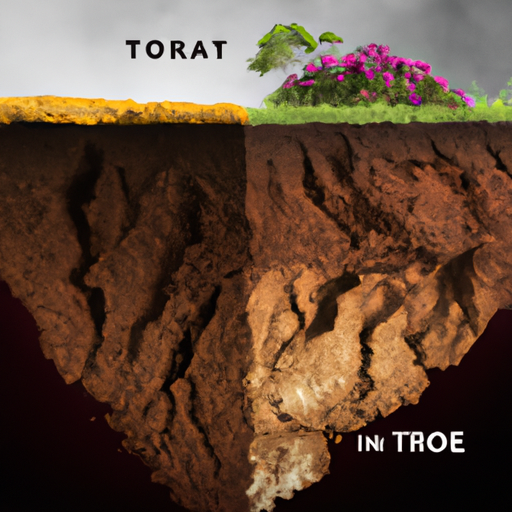Terroir and Tea: The Flavor Secrets Hidden in the Soil
Tickle your taste buds and dive deep into the terroir of tea. Sip on this: the nuanced flavors of your beloved tea rely not only on the leaf itself but also on the earth it grows in. For those who might raise an eyebrow at us geeks getting down and dirty with the concept of terroir, consider this your invitation to join us in the mud pit of tea education. As always, we encourage you to brew a discussion in the comments section – after all, the more dirt we excavate together, the richer our tea experience becomes.
What is Terroir?
Terroir (pronounced "tair-wahr") is a French term, which translates to "a sense of place." This concept essentially highlights the idea that geographical characteristics, such as climate, soil composition, and altitude, can significantly impact agricultural products' flavor profiles. This influence is observed and celebrated in the wine industry, where the taste of a grape is deeply rooted in these factors.
In the context of tea, terroir plays a similar role, influencing the composition and flavor of tea leaves from the same plant species, Camellia sinensis. The details of the environment where tea plants develop have a considerable impact on tea's quality, character, and taste.
So, tea lovers, take a moment to appreciate how the very ground beneath our feet contributes to the deliciousness in our teacups.
How Terroir Affects Tea: A Flavorful Breakdown
Let's shed light on the factors that mold the personality of tea leaves bubbling in our teapots:
-
Climate: Just like people, tea plants thrive in specific environments. The amount of rainfall, humidity, temperature, and sunshine can all impact tea quality. Cooler temperatures and ample mist at high elevations, for instance, promote slow growth, which often leads to complex flavor profiles. Additionally, seasonal changes can result in a more significant variance between tea harvests.
-
Altitude: The plot thickens with altitude. Generally, higher elevations yield teas with lighter, more delicate flavors, while lower elevations produce more robust, full-bodied brews. At higher altitudes, the reduced temperature and thin air slow down the maturity of tea leaves, enabling the development of healthy polyphenols and resulting in a sweeter, more elegant cuppa.
-
Soil Composition: The soil of a tea plantation is like its secret ingredient: its unique composition of minerals and nutrients influences a tea's flavor profile. For example, considering pH levels, tea plants favor slightly acidic soils (around 4.5-6.5). Soils rich in minerals, such as iron, manganese, and zinc, directly contribute to the leaves' palatability, with the minerals' presence intensifying the complexity and depth of flavor.
To provide a concrete example, consider the following table comparing two famous tea regions:
| Tea Region | Notable Tea | Soil Composition |
|---|---|---|
| Darjeeling, India | Darjeeling First Flush | Loamy, well-draining soil with a pH around 5.0; Rich in organic matter |
| Wuyi Mountains, China | Wuyi Rock Oolong | Rocky, mineral-rich soil with a pH around 5.5; Limestone and sandy loam base |
- Cultivation Practices: How tea farmers grow their plants and manage their fields will ultimately impact the final product. Techniques can vary substantially, from the use of fertilizers to pest control methods, and from irrigation practices to pruning schedules. These decisions not only affect the tea plants but also alter the ecosystem surrounding them, further shaping tea's terroir.
Savoring the Subtleties: Experiencing Terroir Through Tea Tasting
To truly appreciate the phenomenon of terroir, one must sip with intent. Tea tasting can unlock the subtle flavors and textures that make terroir tangible. For those embarking upon the terroir tea journey, consider comparing teas from different regions or even within the same region at varying altitudes.
Here's a table to help you start your terroir tea exploration:
| Tea Type | Origin | Flavor Profile |
|---|---|---|
| Longjing | Hangzhou, China | Chestnut, vegetal, and sweet with a gentle roasted undertone; Light, refreshing mouthfeel |
| Gyokuro | Uji, Japan | Umami-rich with a sweet, marine-like aroma; Velvety, smooth mouthfeel |
| Assam | Assam, India | Bold, malty, and brisk; May have a subtle astringency with a rich, full mouthfeel |
| Tie Guan Yin | Anxi, China | Floral, creamy, and slightly fruity; Silky, smooth mouthfeel with a lingering aftertaste |
| Kenyan Black Tea | Kenya | Rich, robust, and full-bodied with subtle notes of malt and fruit; Moderate to brisk astringency and a warming, bold mouthfeel |
In Conclusion: Appreciate Your Cuppa From Root to Leaf
As tea connoisseurs, we often rightfully focus on the leaves and the brewing process. But understanding and appreciating terroir grants us a more profound connection to the elixir in our teacups. Raising awareness of the importance of terroir can also lead to more responsible and sustainable tea consumption choices.
So, dear readers, the next time you sip your tea, take a moment to ponder the earth that cradled its roots and nurtured its growth. May your cuppa taste all the sweeter for it, and may your tea journey continue to be steeped in wonder.
Now, let's dig into more tea talk together in the comment section below. Do you have a favorite tea with a unique terroir? How do you think the terroir of different tea-producing regions compares? Let's brew up some discussion and continue learning together!
